What do you think of when you think of the city of Edinburgh? Perhaps the ancient castle looming over the city from Castle Rock. Or the plethora of festivals that take place in the city’s streets every year. Maybe you know Scotland’s capital city best as the seat of the Scottish Parliament at Holyrood. But what else has taken place within its ancient boundaries? What is the history of the people who have lived there, worked there, loved there? We invite you to dive deeper into Edinburgh’s history with the online resources below!
Edinburgh
Edinburgh has been recognised as the capital of Scotland since at least the 15th century. The city is home to one of Scotland’s four ancient universities, the University of Edinburgh, founded in 1583. It is also home to the Palace of Holyroodhouse, the monarch’s official residence in Scotland. Edinburgh attracts millions of visitors from around the world every year, for its history as well as its vibrant cultural scene. This includes the Edinburgh International Festival and the Fringe Festival, both taking place in August of each year. Edinburgh is also home to the main building of the National Library of Scotland on George IV Bridge, where many of our collections are housed, cared for, and utilised by the public.
Where to find local collections
Edinburgh Collection, Central Library: https://www.edinburgh.gov.uk/libraries/discover-treasures-central-library
Capital Collections: https://www.capitalcollections.org.uk/
Edinburgh City Archives: https://www.edinburgh.gov.uk/archives/edinburgh-city-archives-1/3
Books (non-fiction)
Publications from the Abbotsford Club and the Bannatyne Club, text publication societies founded in Edinburgh.
Historical memoirs of the reign of Mary, Queen of Scots, and a portion of the reign of King James the Sixth by Lord Herries, 1836.
In the Digital Gallery, Publications by the Abbotsford Club.
https://digital.nls.uk/79577666
Papers relative to the Regalia of Scotland by
In the Digital Gallery, Publications by the Bannatyne Club.
https://digital.nls.uk/81104160
Books (fiction)
Kidnapped by Robert Louise Stevenson, 1886.
In the Digital Gallery.
https://digital.nls.uk/74462954
Film

Various scenes around Edinburgh from the late 1930s. Entered in Edinburgh Amateur Film Festival 1938.
Northern Capital filmed by Jean L. Gray, 1937
From the Moving Image Archive.
https://movingimage-onsite.nls.uk/film/3981
(Check out 09:45 for a silent observation of the One O’clock Gun!)
More films of Edinburgh City from the Moving Image Archive: https://movingimage-onsite.nls.uk/search?place=16&videoAccess=r
Manuscript Collection
Ian Rankin Archive, manuscripts and other items largely written by Edinburgh author Ian Rankin, 1972-2018.
- The Rankin Files: Lifting the Lid https://www.youtube.com/watch?v=ixUKwtLNXPY&t=328s
- Online catalogue detailing the contents of the archive: https://manuscripts.nls.uk/repositories/2/resources/20273
- Blog post describing the Ian Rankin archive project at its mid point: https://blog.nls.uk/the-rankin-files/
- Blog post for Ian Rankin’s 60th birthday, highlighting materials from the archive: https://blog.nls.uk/happy-60th-birthday-ian-rankin/
Maps
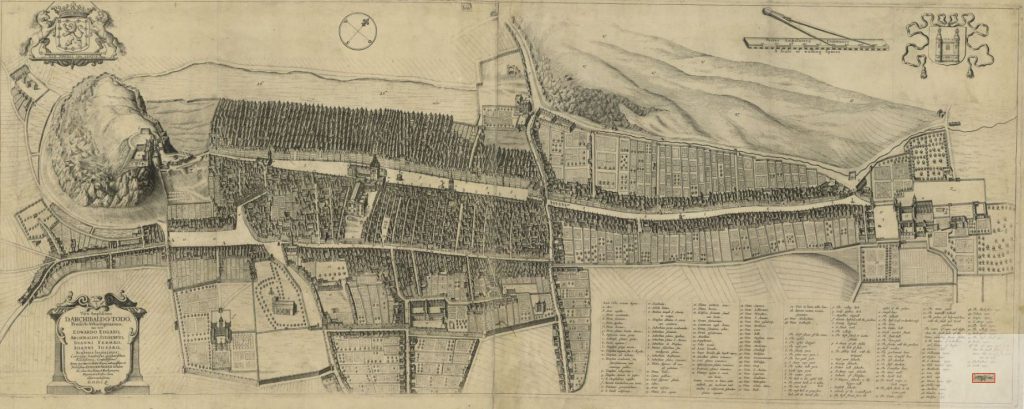
Edinodunensis Tabulam by James Gordon, 1647?.
On the Map images website.
https://maps.nls.uk/view/74475427
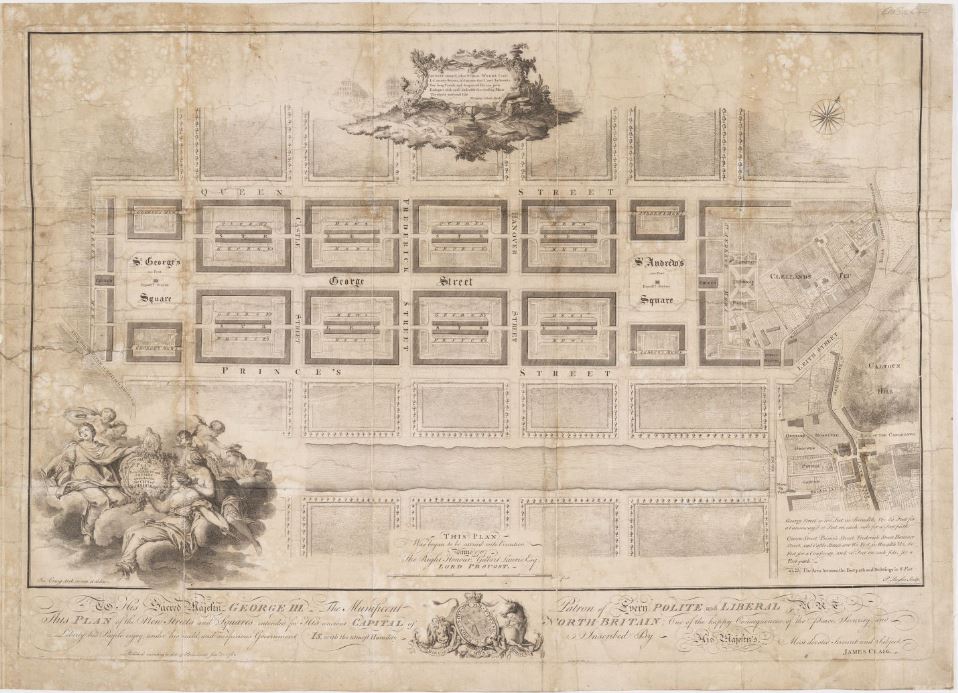
To His Sacred Majesty George III… this Plan of the new streets and squares, intended for his ancient capital of North-Britain by James Craig, 1768.
On the Maps images website.
https://maps.nls.uk/view/74414124
E-Resource
Struggles for Liberty: Frederick Douglas in Edinburgh.
Interactive maps as part of a larger online resource, African American Revolutionaries in the Atlantic World, focusing on the 19th century.
https://digital.nls.uk/learning/struggles-for-liberty/maps/
Business
Bartholomew Archive, 1820-2002.
https://digital.nls.uk/bartholomew/
The Bartholomew Archive is the remarkable record of the Edinburgh-based firm of map engravers, printers and publishers, John Bartholomew & Son Ltd. It is one of the most extensive cartographic archives available for research in a public institution. Members of the Bartholomew family were engaged in mapmaking from the first known map engraving work of George Bartholomew in 1825. John Bartholomew junior started printing operations before 1870. For more than a century afterwards the Bartholomew firm specialised in high-quality map production.
People
Robert Louis Stevenson, 1850-1894
eResource exploring Stevenson’s story, illustrated with material held in the National Library of Scotland’s collections.
https://digital.nls.uk/rlstevenson/
Other notable figures:
- Dame Muriel Spark: https://digital.nls.uk/muriel-spark/
- Arthur Conan Doyle: in the John Murray Archive: https://digital.nls.uk/jma/who/conan-doyle/index.html, and submitting a letter to Blackwood’s Magazine in 1882: https://www.nls.uk/exhibitions/treasures/blackwoods-magazine/literary-figures/arthur-conan-doyle/
Song / Music

Flowers of Edinburgh, a traditional reel printed in the Edinburgh Repository of Music, 1818.
From the Glen Collections of printed music in the Digital Gallery.
https://digital.nls.uk/87777309
Also, Craigmillar Castle, a march printed in the Caledonian repository of music, for the great highland bag pipe, 1870)
From the Glen Collection of printed music in the Digital Gallery.
https://digital.nls.uk/105011810
Castle
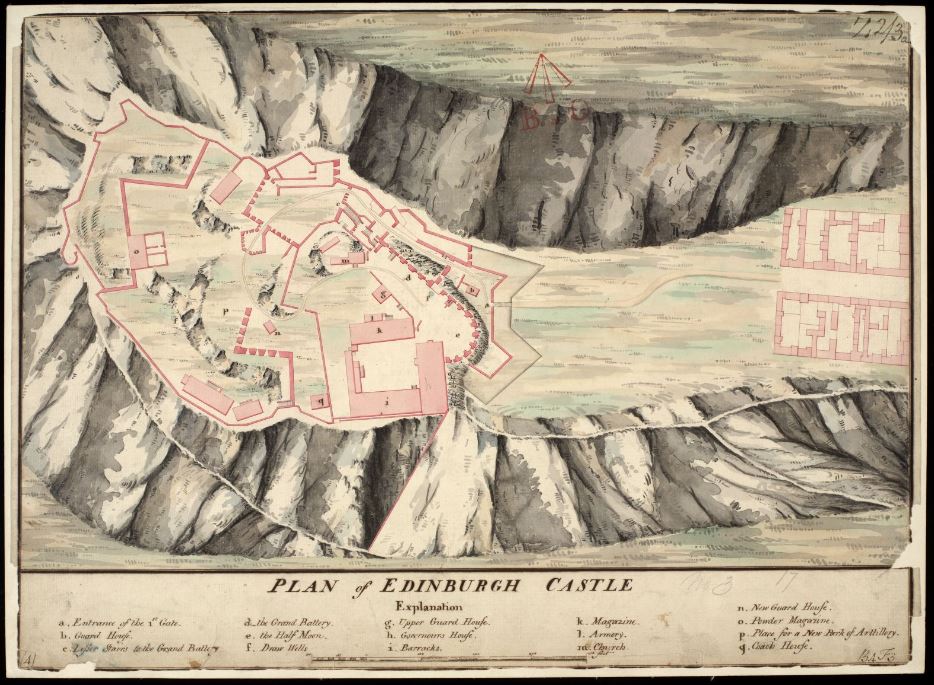
Plan of Edinburgh Castle by Thomas Moore, 1725.
On the Maps website (MS.1645 Z.02/03a).
https://maps.nls.uk/view/00002615
Our Board of Ordnance collection of military maps includes some fascinating plans of Edinburgh Castle dating from the 18th century, when the Castle was a military stronghold, rather than the tourist attraction it is today.
Other Board of Ordnance Plans relating to Edinburgh: https://maps.nls.uk/military/placename/Edinburgh
Food
Lifting the Lid, a food and drink exhibition at the Library from 2015 that uncovered the changes in Scotland’s culinary tastes over the course of four centuries. Includes account books that give us a glimpse into the eating habits of an upper-class 18th century home in Edinburgh.
https://www.nls.uk/exhibitions/food-and-drink/household-accounts/
Photograph
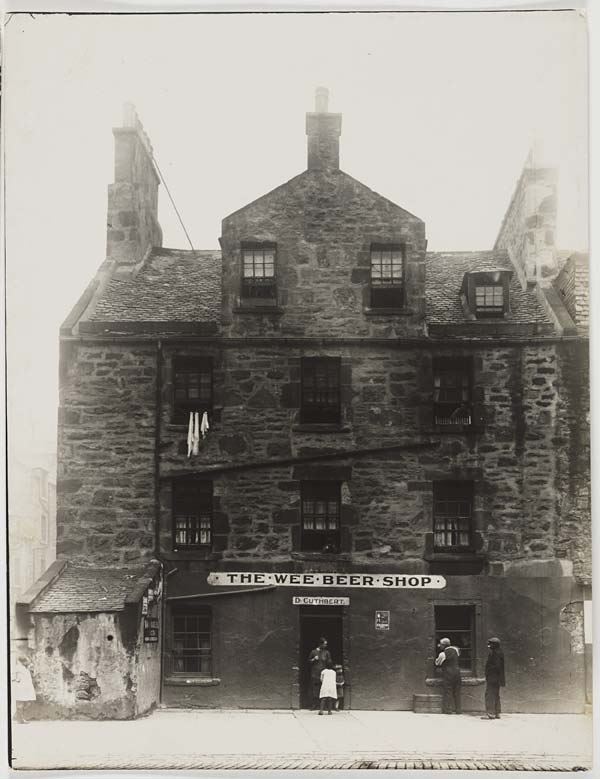
Photographs of the south side of Edinburgh taken by Alfred Henry Rushbrook, 1929.
In the Digital Gallery.
https://digital.nls.uk/74457611
Village
Stockbridge. Originally a small outlying village, Stockbridge was incorporated into the City of Edinburgh in the 19th century. Sir Henry Raeburn, the painter (and local landowner) had much to do with the development of Stockbridge, including commissioning the stone bridge over the Water of Leith in 1801 as a means of expanding the village to accommodate the growing artisan population. The village gradually grew and blended with the New Town as it continued to grow northwards. This map shows the point where the old road to Stockbridge meets (and became part of) the New Town.
Edinburgh – Sketch showing the present and proposed roads from Stockbridge to Edinburgh from the Stevenson engineering plans, 1819.
On the Maps images website.
https://maps.nls.uk/view/218515127
Further Reading
- Edinburgh Characters by J Jenkins
- https://digital.nls.uk/edinburgh-characters-by-j-jenkins/archive/75496599?mode=gallery
- Around 150 hand-coloured caricatures of Edinburgh celebrities and unknown characters. Etchings by artist J. Jenkins in the style of John Kay. Plates dated from 1799 to 1805. Characters include prominent people like Lord Dundas, Sir John Sinclair, Earl of Crawford, Lord Montague. Also ‘a leads merchant’ and an unidentified soldier.
- Edinburgh Characters by J Jenkins
- https://digital.nls.uk/edinburgh-characters-by-j-jenkins/archive/75496599?mode=gallery
- Around 150 hand-coloured caricatures of Edinburgh celebrities and unknown characters. Etchings by artist J. Jenkins in the style of John Kay. Plates dated from 1799 to 1805. Characters include prominent people like Lord Dundas, Sir John Sinclair, Earl of Crawford, Lord Montague. Also ‘a leads merchant’ and an unidentified soldier.
- Edinburgh Characters by J Jenkins
- https://digital.nls.uk/edinburgh-characters-by-j-jenkins/archive/75496599?mode=gallery
- Around 150 hand-coloured caricatures of Edinburgh celebrities and unknown characters. Etchings by artist J. Jenkins in the style of John Kay. Plates dated from 1799 to 1805. Characters include prominent people like Lord Dundas, Sir John Sinclair, Earl of Crawford, Lord Montague. Also ‘a leads merchant’ and an unidentified soldier.
- Air Photo Mosaics of Edinburgh City, 1946: https://maps.nls.uk/geo/explore/#zoom=14&lat=55.95043&lon=-3.21493&layers=9&b=1
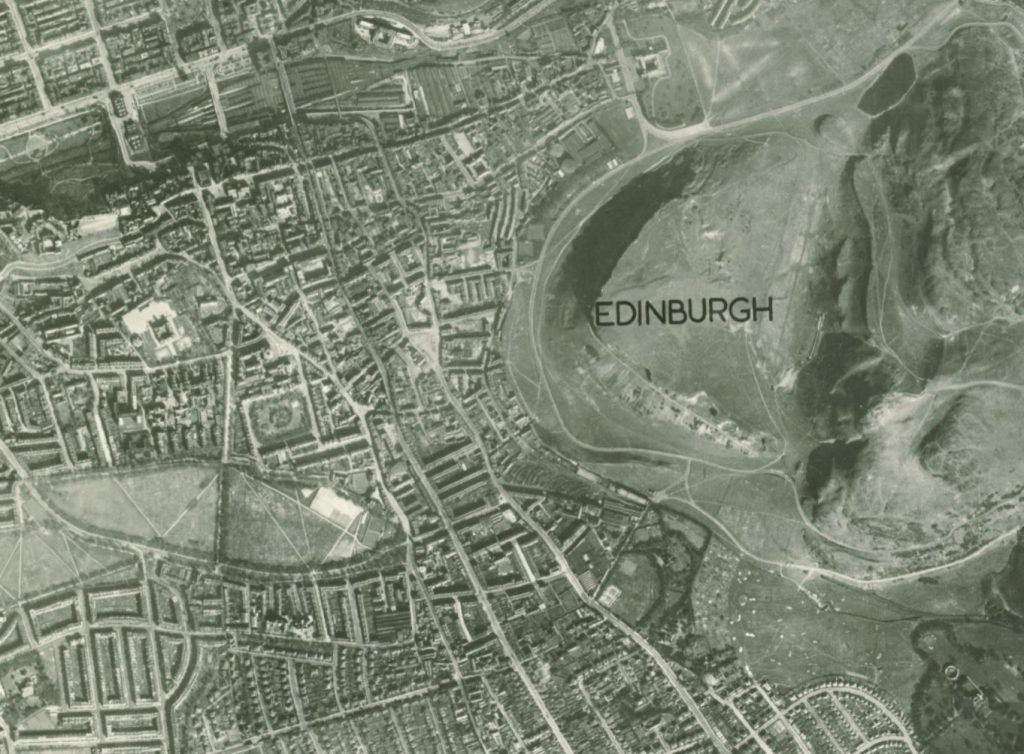
- University of Edinburgh Collections Online: https://collections.ed.ac.uk/
- Scotsman Digital Archive: https://auth.nls.uk/eresources/goto/115
